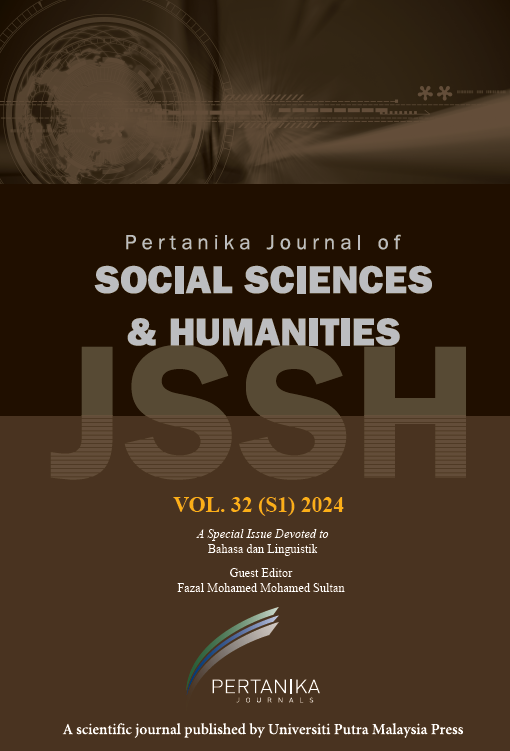PERTANIKA JOURNAL OF SOCIAL SCIENCES AND HUMANITIES
e-ISSN 2231-8534
ISSN 0128-7702
J
J
Pertanika Journal of Social Science and Humanities, Volume J, Issue J, January J
Keywords: J
Published on: J
J
-
Ali, M., Haxha, S., & Flint, I. (2022). Tuneable microwave photonics filter based on stimulated brillouin scattering with enhanced gain and bandwidth control. Journal of Lightwave Technology, 40(2), 423-431. https://doi.org/10.1109/JLT.2021.311831
-
Aoki, Y., Tajima, K., & Mito, I. (1988). Input power limits of single-mode optical fibers due to stimulated Brillouin scattering in optical communication systems. Journal of Lightwave Technology, 6(5), 710-719. https://doi.org/10.1109/50.4057
-
Bhogal, R. K., & Sindhwani, M. (2022). Generation of single sideband-suppressed carrier (SSB-SC) signal based on stimulated brillouin scattering. Journal of Physics: Conference Series 2327(1), Article 012025. https://doi.org/10.1088/1742-6596/2327/1/012025
-
Deventer, M. O. V., & Boot, A. J. (1994). Polarization properties of stimulated Brillouin scattering in single-mode fibers. Journal of Lightwave Technology, 12(4), 585–590. https://doi.org/10.1109/50.285349
-
Du, S., Liu, X., Du, P., Wang, D., Ma, B., Li, D., Wang, Y., Zhang, J., Wang, Y., & Wang, A. (2023). Broadband microwave photonic frequency measurement based on optical spectrum manipulation and stimulated Brillouin scattering. IEEE Photonics Journal, 15(2), Article 5500708. https://doi.org/10.1109/JPHOT.2023.3251974
-
Frederic, A., Veronique, Q., Mikael, G., Andre, P., & Yves, A. (2013). A low‐consumption electronic system developed for a 10 km long all‐optical extension dedicated to sea floor observatories using power‐over‐fiber technology and SPI protocol. Microwave and Optical Technology Letters, 55(11), 2562-2568. https://doi.org/10.1002/mop.27916
-
Gertler, S., Otterstrom, N. T., Gehl, M., Starbuck, A. L., Dallo, C. M., Pomerene, A. T., Trotter, D. C., Lentine, A. L., & Rakich, P. T. (2022). Narrowband microwave-photonic notch filters using Brillouin-based signal transduction in silicon. Nature Communications, 13(1), Article 1947. https://doi.org/10.1038/s41467-022-29590-0
-
Gökhan, F. S., Göktaş, H., & Sorger, V. J. (2018). Analytical approach of Brillouin amplification over threshold. Applied Optics, 57(4), 607-611. https://doi.org/10.1364/AO.57.000607
-
Harish, A. V., & Nilsson, J. (2019). Suppression of stimulated Brillouin scattering in single-frequency fiber Raman amplifier through pump modulation. Journal of Lightwave Technology, 37(13), 3280-3289. https://doi.org/10.1109/JLT.2019.2914081
-
Loayssa, A., Hernández, R., Benito, D., & Galech, S. (2004). Characterization of stimulated Brillouin scattering spectra by use of optical single-sideband modulation. Optics Letters, 29(6), 638-640. https://doi.org/10.1364/OL.29.000638
-
Mandalawi, Y. N. A., Yaakob, S., Adnan, W. A. W., Yaacob, M. H., & Zan, Z. (2019). Laser phase noise effect and reduction in self-homodyne optical OFDM transmission system. Optics Letters, 44(2), 307-310. https://doi.org/10.1364/OL.44.000307
-
Marhic, M. E., & Cholan, N. A. (2014, June 8-13). Improvement of optical signal-to-noise ratio of a high-power pump by stimulated brillouin scattering in an optical fiber. [Paper Presentation]. Conference on Lasers and Electro-Optics (CLEO), San Jose, USA. https://doi.org/ 10.1364/CLEO_SI.2014.SM4N.6
-
Nieves, O. A., Arnold, M. D., Steel, M. J., Schmidt, M. K., & Poulton, C. G. (2021). Noise and pulse dynamics in backward stimulated Brillouin scattering. Optics Express, 29(3), 3132-3146. https://doi.org/10.1364/OE.414420
-
Pan, J., Richter, T., & Tibuleac, S. (2018, March 11-15). OSNR Measurement comparison in systems with ROADM filtering for flexible grid networks.[Paper presentation]. Optical Fiber Communications Conference and Exposition (OFC), San Diego, California.
-
Pang, Y., Xu, Y., Zhao, X., Qin, Z. & Liu, Z. (2022). Stabilized narrow-linewidth brillouin random fiber laser with a double-coupler fiber ring resonator. Journal of Lightwave Technology, 40(9), 2988–2995. https://doi.org/10.1109/jlt.2022.3148118
-
Preussler, S., & Schneider, T. (2016). Stimulated Brillouin scattering gain bandwidth reduction and applications in microwave photonics and optical signal processing. Optical Engineering, 55(3), Article 031110. https://doi.org/10.1117/1.OE.55.3.031110
-
Qi, T., Li, D., Wang, Z., Wang, L., Yu, W., Yan, P., Gong, M., & Xiao, Q., (2022). 6.85 KW ytterbium-raman fiber amplifier based on adjustable raman threshold method. Journal of Lightwave Technology, 40(12), 3907-3915. https://doi.org/10.1109/JLT.2022.3151489
-
Qing, T., Li, S., Xue, M., & Pan, S. (2016). Optical vector analysis based on double-sideband modulation and stimulated Brillouin scattering. Optics Letters, 41(15), 3671-3674. https://doi.org/10.1364/OL.41.003671
-
Ravet, F., Snoddy, J., Bao, X., & Chen, L. (2008). Power thresholds and pump depletion in Brillouin fiber amplifiers. The Open Optics Journal, 2(1), 1-5. https://doi.org/10.2174/1874328500802010001
-
Souidi, Y., Taleb, F., Zheng, J., Lee, M. W., Du Burck, F., & Roncin, V. (2016). Low-noise and high-gain Brillouin optical amplifier for narrowband active optical filtering based on a pump-to-signal optoelectronic tracking. Applied Optics, 55(2), 248–253. https://doi.org/10.1364/AO.55.000248
-
Zan, M. S. D. B., Tsumuraya, T., & Horiguchi, T. (2013). The use of Walsh code in modulating the pump light of high spatial resolution phase-shift-pulse Brillouin optical time domain analysis with non-return-to-zero pulses. Measurement Science and Technology, 24(9), Article 094025. https://doi.org/10.1088/0957-0233/24/9/094025
-
Zhang, Q., Han, X., Shao, X., Wang, Y., Jiang, H., Dong, W., & Zhang, X. (2022). Stimulated Brillouin scattering-based microwave photonic filter with a narrow and high selective passband. IEEE Photonics Journal, 14(4), Article 5537507. https://doi.org/10.1109/JPHOT.2022.3184761
-
Zhao, J., Yang, F., Wei, F., Zhang, X., Ding, Z., Wu, R., & Cai, H. (2020). Effect of linewidth on intensity noise induced by stimulated Brillouin scattering in single-mode fibers. Optics Express, 28(10), 15025–15034. https://doi.org/10.1364/OE.393239
ISSN 0128-7702
e-ISSN 2231-8534
Recent Articles




